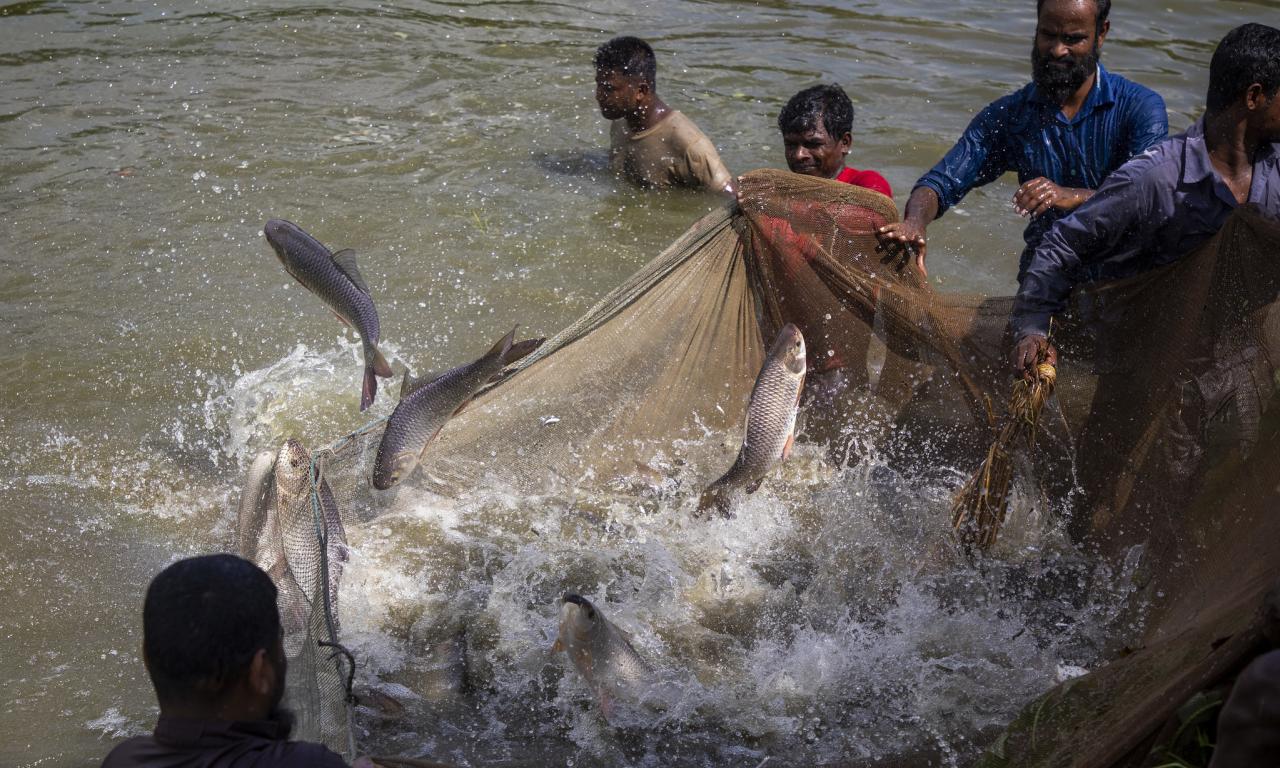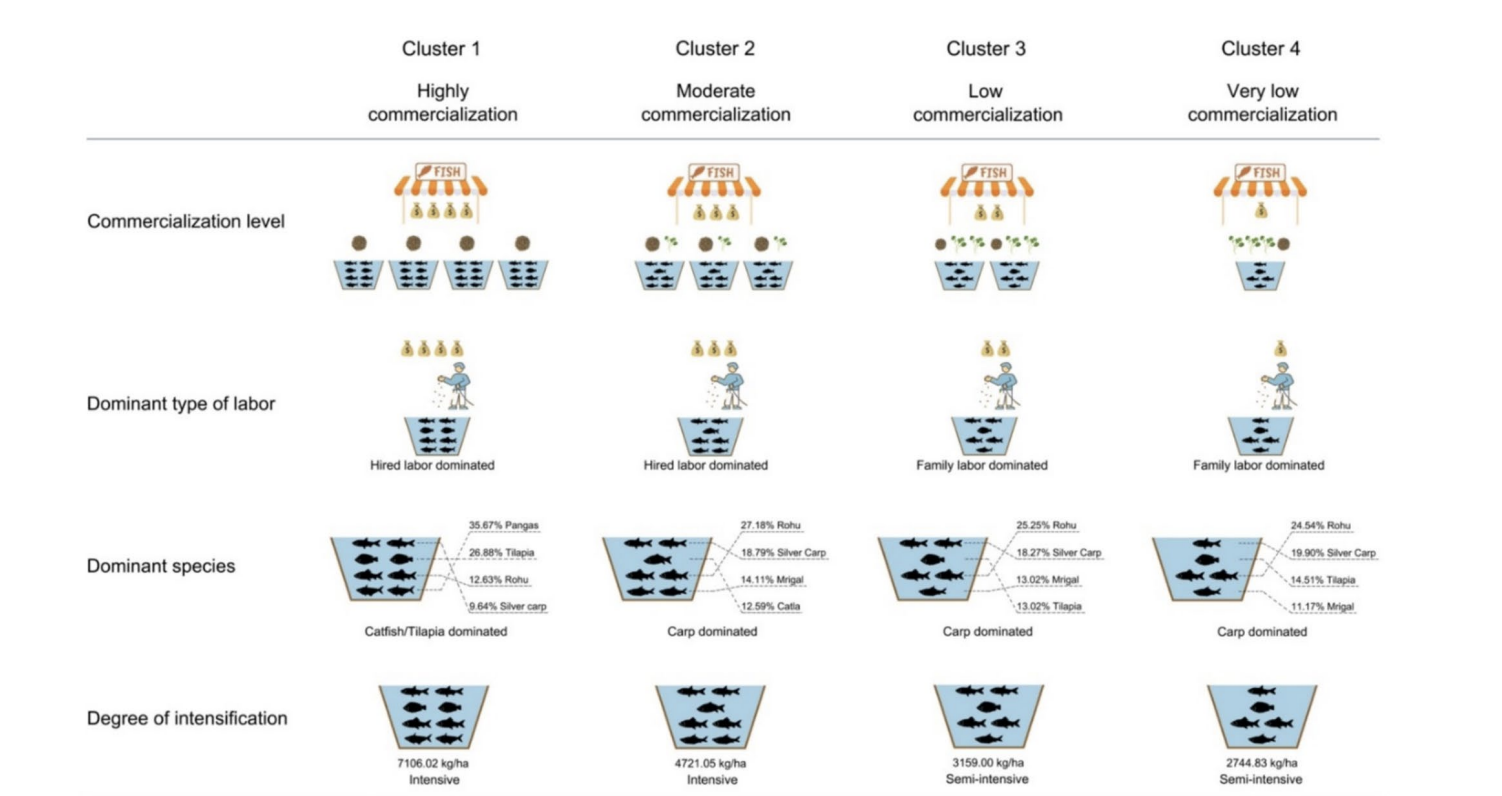
Carp farming is a cornerstone of food and income for millions of people in Bangladesh. But until now, there has been little hard data on how diverse these small-scale farms really are. A new study from WorldFish scientist and partners changes that.
For the first time, researchers collected data from more than 4,500 carp farmers across 54 regions. Using this, they developed a national typology of small-scale carp production systems. The study maps four distinct types of farms with very different levels of commercialization, intensity and performance.
Same Species, Different Strategies
Some are high input and high output operations selling to local markets. Others use few resources and produce mainly for home consumption. In between are semi-commercial farms trying to scale up within real constraints. A fourth group combines features of the others, mixing fish with crops or livestock and adjusting their approach based on the season or what conditions allow.

The findings show sharp trade-offs. Intensive farms earn more but pollute more. Less intensive farms are more environmentally efficient but less profitable. Preferences for improved fish also vary. Some farmers value growth rate and size. Others focus on taste, cost or appearance.
The research supports Bangladesh’s National Aquaculture Development Strategy, which calls for measured intensification across the sector. It adds the missing piece, evidence about how small-scale systems actually differ. That matters for designing policies and investments that work in practice, not just in theory.
With aquaculture central to Bangladesh’s development and climate goals, this study offers a practical evidence base to guide informed decisions. It shows clearly that small-scale doesn’t mean one-size-fits-all.
